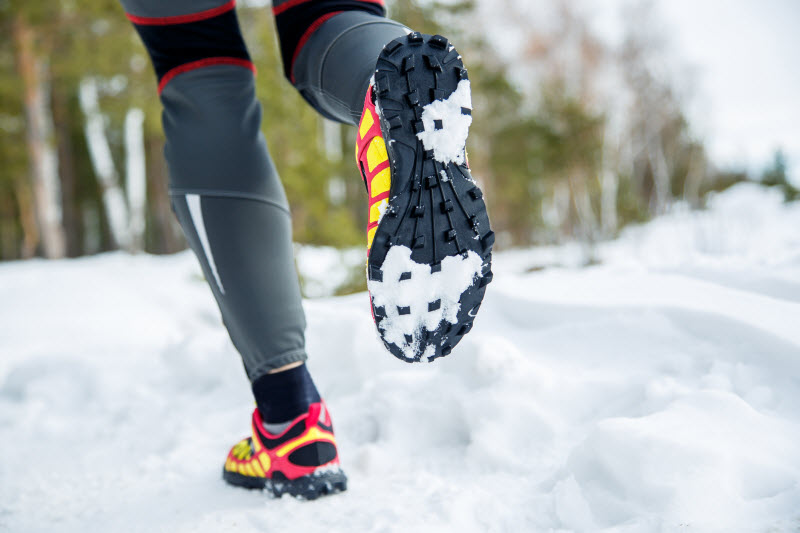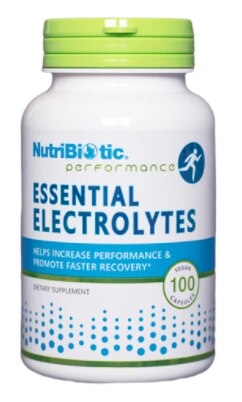Running is a cardiovascular exercise par excellence. It helps you lose weight, improve stamina, increase productivity, reduce stress—the list is long. But when it comes to running in cold weather, hitting the pavement can more challenging. That’s why a lot of people shy away from outdoor running throughout the winter months.
But this shouldn’t be the case! There are many measures you can take to protect yourself when braving freezing temperatures for a workout.
Here, we’ll share with you a few guidelines to help you stay comfortable and safe when running in the cold. First things first, let’s discuss some of the dangers associated with exercising in freezing temperatures.
The fatal risk of hypothermia
Running in harsh cold conditions can not only drastically impact your performance but it also carries the risk of health problems. One of the most notorious is hypothermia, which is an abnormal drop in body temperature.
The dangers of this condition are greater when exercising in super freezing, windy, and/or wet conditions.
Hypothermia strikes once core your body temperature dips below 95 degrees F—about 35 degrees Celsius. When this occurs, your vital systems—including your cardiovascular and nervous systems—as well as vital organs stop functioning properly.
When pushed to the extreme, this condition can cause respiratory failure, heart problems and even death. This is why hypothermia requires immediate medical attention.
Here are a few signs to keep an eye on:
- Dizziness and nausea
- Slurred speech
- Unusual fatigue
- An abnormal increase in heart rate
- Lack of coordination and focus
- Intense shivering.
- Confusion
- Poor decision making
Experience two or more of these red flags, and you’re likely heading in the wrong direction. Stop, head back and seek immediate medical help.
Frostbite
Although not as lethal as hypothermia, frostbite is another serious problem that can be caused by running in the extreme cold.
This condition strikes when unprotected body surfaces are in direct contact with freezing air. It’s the actual freezing of the superficial layer of the skin and the underlying tissues. The deeper the tissue damage, the more severe the frostbite.
The risk of frostbite is greater when running in temperatures reaching -10-degrees, even for just half an hour, according to the National Weather Service.
Areas sensitive to frostbite include your extremities, such as your fingers, nose and toes.
Here are some of the early symptoms of frostbite:
- Numbness in the affected area
- Loss of feeling
- Pain
- Skin turning white and hard
- Skin starting to get blisters
- Itchiness and stinging sensation
If you suspect the onset of frostbite, head back inside to get out of the cold immediately.
Next, slowly warm the affected area by either running it under warm water or wrapping in a warm blanket. Avoid rubbing the frostbite site—as doing so can only cause skin damage and lead to more trouble. And you don’t want that.
If symptoms don’t fade, head to the emergency room.
The freezing lung
The myth that running in the cold can damage or even freeze your lungs is nothing more than a myth. Here’s the truth.
Our pulmonary systems do an excellent job of warming the air we breathe in. As you inhale cold air, it’s almost instantly warmed to body temperature as it reaches the respiratory tract—the only exception is if the temperature is far below zero.
For this reason, stop worrying about the cold air killing your lung cells and damaging the organ while exercising in cold weather.
But don’t let your guard down, either. Frigid air can pose a bit of a threat to the airways, causing irritations and achy burning sensations in the throat. This is especially the case if you have any type of pulmonary disease, such as asthma or pneumonia.
How to stay safe while running in cold weather
Now that you’re aware of some of the dangers that outdoor cold-weather exercise presents, let’s look at some of the steps you can take to protect yourself.
Wear the right clothing
To stay safe when running in the cold, choose high-tech running gear that helps wick sweat away from your skin while keeping your body warm and dry.
Avoid cotton at all times. Once it gets wet, it tends to stay wet, causing problems like chafing.
Wear several layers
Layering clothing is a smart way to dress for a cold run because it lets you manage your temperatures by unzipping or removing items as you heat up.
Here are the three steps of a good layering strategy:
- First layer – Should be snug fitting and made of synthetic fabric to draw sweat away from your skin.
- Second layer—Should be made of heavy wool or fleece to help with insulation.
- Third layer – Should be waterproof but breathable to help repel the elements.
Cover your head
As much as 50 percent of your body heat is lost through the head. Counteract this loss by covering your head when running in the extreme cold.
Shield your weak spots
Wear a thick pair of gloves made with wicking material to guard your hands and fingers against the extreme cold.
But, in extreme cold, try wearing a pair of heavier gloves or mittens lined with wool or fleece for more protection and insulation. You can always remove the outer pair if desired without exposing your skin to the cold.
Choose the right shoes
To protect your feet against the cold, choose running shoes that are either waterproof (but still breathable) or designed with material that protects your feet from extra moisture.
You should also look for shoes with extra grip and traction to help you stay steady on frozen, slippery surfaces. But this depends on where you live and what kind of terrains you usually run on.
At the very least, make sure that the treads on your running shoes are not worn out — otherwise, they won’t give you the traction you need.
Your socks
Choose high-performance, moisture-wicking socks. I’d recommend socks made with polypropylene or acrylic as these perform the best wicking function and keep your toes dry and comfy.
Cover your mouth & nose
Try wearing a scarf or balaclava around your nose and mouth. This not only helps trap the moisture that you usually lose as you exhale, it also helps reduce many of the breathing problems associated with cold-weather running.
Try inhaling through your nose
Inhaling in through the nose, and not the mouth, can also reduce the risk of potential breathing problems.
Of course, this depends on how intense you are going to run, your fitness level, and your own personal preference and personal breathing strategy.
It’s not always possible to get enough air while running by mainly breathing in through your nostrils, but this is a good trick to keep in mind in case you feel any burning sensations.
When should you avoid running in cold weather?
I wholeheartedly believe that anyone can keep running throughout the winter months, but there are, of course, exceptions. In fact, in some cases, it’s better to err on the side of caution and skip an outdoor run altogether.
If logging miles means putting you in danger, you’re better off not running at all. This is especially the case if you already have a chronic condition such as:
- Asthma
- Exercise-induced bronchitis
- Heart disease
- Raynaud’s diseases
So what should you do then? Instead of heading outdoors, hop on a treadmill and run indoors. That’s way better than staying stuck on the sofa for the rest of the day.
Final thoughts
When it comes down to it, winter running is just running. It’s neither good nor bad as long as you are healthy and take the right safety precautions for outdoor conditions and the temperature of the air.
Most of the troubles are preventable and avoidable—provided you do what you need to do!




